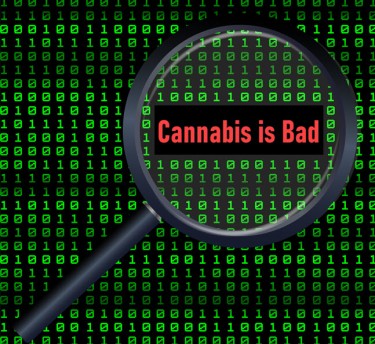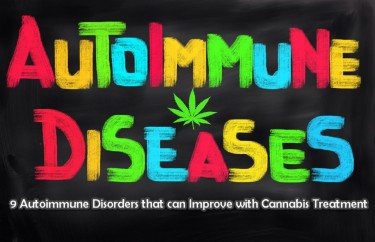Cannabis News
A Guide to Dispel Media Gaslighting of the Cannabis Plant
Published
3 months agoon
By
admin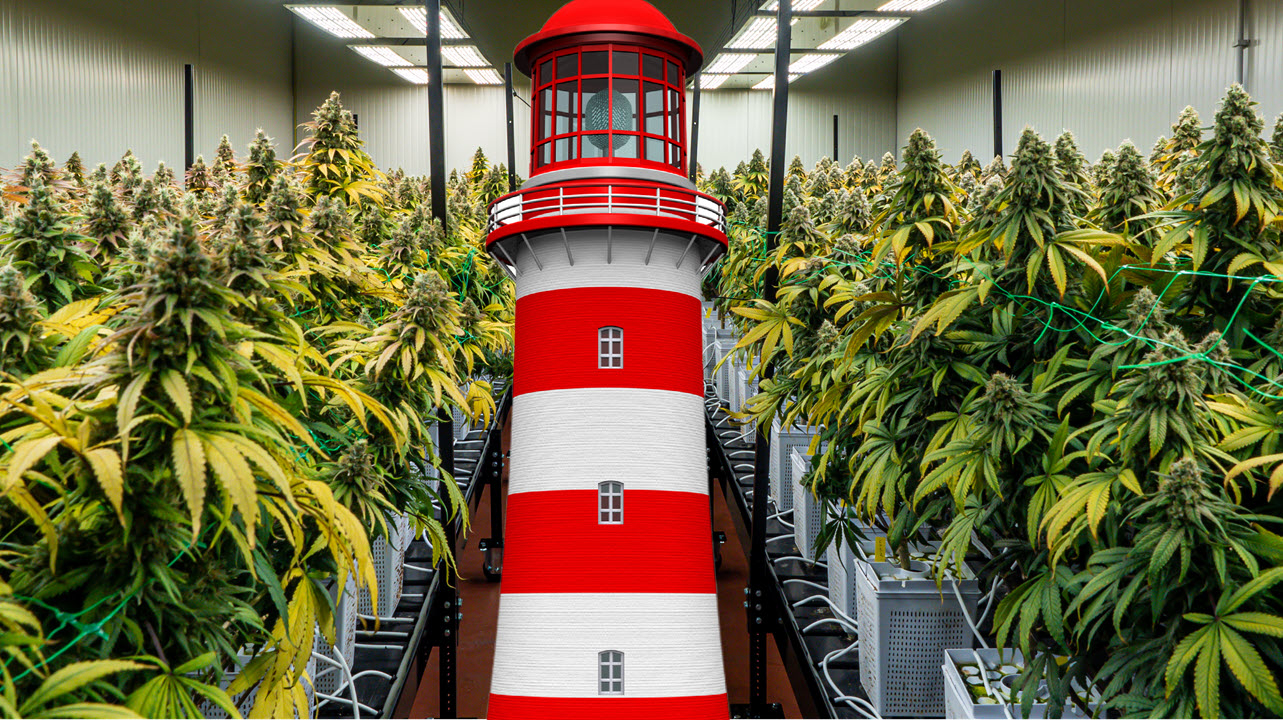
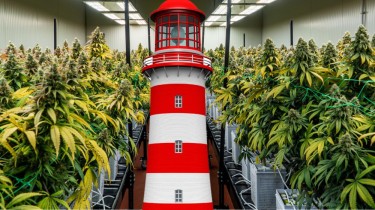
LightHousing – A guide to dispel Media Gaslighting
You’ve probably heard the term “gaslighting” thrown around in the news or casual conversations lately. But have you ever stopped to really think about what it means? Imagine you’re at a party, and you notice your drink tastes funny. When you mention it to your friend, they insist you’re just being paranoid and that the drink is fine. Later, you find out they actually spiked your drink. That’s gaslighting – making you question your own perception of reality.
Now, as you may have noticed, one of the places where gaslighting occurs most frequently is in the media. Whether it’s your social media feed or the evening news, you’re bombarded with information that can often distort your view of the world. It’s like we’re all trapped in a house of mirrors, never quite sure if what we’re seeing is real or just a twisted reflection.
Let me give you a recent example that’s been lighting up my Twitter feed. Lately, it seems like every other post is about how “mass immigration” is causing riots in England, painting a picture of a country descending into anarchy. The narrative goes that the “regular Joe” is being replaced by some faceless “other,” and chaos reigns in the streets.
But here’s where it gets interesting. I’ve got a friend who actually lives in London, so I decided to go straight to the source. I shot him a message, asking what was really going on. His response? “It’s not really happening where I live…” He went on to give me a much more nuanced take on the political temperature in his neck of the woods.
This got me thinking. If what we’re seeing online is so different from the reality on the ground, what’s really going on here? And more importantly, how can we, as savvy media consumers, cut through the noise and find the truth?
That’s where the concept of “Lighthousing” comes in. But before we dive into that, let’s take a take a few steps back and see if how perhaps you could play a pivotal role in breaking the illusionary spell of false narratives being spammed into your reality.
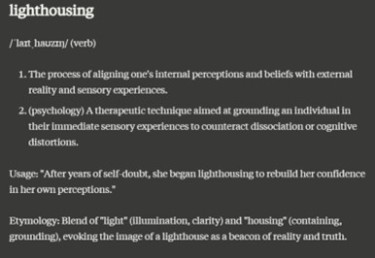
The story of “Lighthousing” didn’t end with that initial conversation. A few days after our chat, my friend in England shot me a message that caught me off guard. The protests were now close to where he lived. Had we been wrong in our initial assessment? This turn of events highlighted the fluid nature of reality and the danger of settling into fixed beliefs too quickly.
As we continued our dialogue, we delved deeper into how these protests form. We discussed the concept of psychic entrapment – the way unquestionable beliefs can lock people into rigid mindsets. It’s that sheer conviction of “We Are Right” that can be so dangerous, especially when multiple tribes are shouting the same thing. History has shown us time and again where that road leads, and it’s rarely anywhere good.
But my friend, ever the intrepid explorer, decided to take a different approach. Instead of cowering in fear or accepting the digital narrative at face value, he chose to go out and feel the energy of the protests for himself. He sought out an “anti-racist protest” to see if what we’d been shown on Twitter aligned with reality on the ground.
What he discovered was eye-opening. He took a video and narrated the whole experience. As you can see for yourself, the reality portrayed digitally was far from in harmony with what was actually happening. The chaos and violence that had dominated our Twitter feeds were nowhere to be seen. Instead, he found a passionate but largely peaceful gathering.
When he returned, our conversation shifted to the importance of seeing through these deceptive messages. We realized that these distorted portrayals weren’t just inaccurate – they were actively fueling the potential for the very reality they claimed to be reporting. It was a sobering realization about the power of media narratives to shape not just our perceptions, but potentially our actions as well.
That’s when I posed the question: “What’s the opposite of gaslighting?” We began working on a concept, tossing ideas back and forth. We wanted something that captured the essence of illuminating truth, of grounding oneself in reality rather than getting lost in the fog of misinformation. Eventually, we settled on “Lighthousing.” It felt right – a beacon of truth cutting through the darkness of distortion.
We even went so far as to create a dictionary definition for our new term, cementing its meaning and purpose. But more than just a clever word, we understood the vital need for individuals like my friend to go out and get that “boots on the ground” perspective. These first-hand experiences create a feedback loop that can illuminate the masses on what’s really going on, countering the often sensationalized or manipulated narratives we’re fed online.
It became clear to us how many of us live within digital bubbles, our emotional frequencies affected by what we see, even when what we’re seeing is illusory, false, or designed with malintent. The challenge, then, is how to break free from these bubbles and act as a lighthouse – an objective beacon of truth in the smog of subjective reality manipulation.
This realization opened up a whole new set of questions for us. How can individuals cultivate this “lighthousing” mindset? What tools and techniques can we use to stay grounded in reality when the digital world seems determined to sweep us away in a tide of distortion? These are the questions we’ll explore next, as we delve deeper into the art and practice of lighthousing in our modern, media-saturated world.
While writing this article, I continued to speak with my friend and we came up with the following guideline on becoming a lighthouse in this world of uncertainty. Here’s the process on how you can liberate yourself from your own prejudice.
-
Illuminate Your Inner Landscape Just as a lighthouse casts its beam across the dark waters, your first step is to turn that light inward. Take a deep dive into your psyche, examining your thoughts, beliefs, and emotional patterns with unflinching honesty. This isn’t about judgment, but awareness. Notice how your mind operates, where it tends to make assumptions, and how it fills in gaps in understanding. This self-reflection is your foundation for becoming a beacon of truth.
-
Calibrate Your Sensory Perception Next, work on aligning your internal perceptions with external reality. This is about becoming a keen observer of both your inner world and the outer one. Pay close attention to how you interpret sensory input and compare it to objective reality. Are there discrepancies between your internal map and the territory of the external world? Identifying these gaps is crucial for accurate “lighthousing.”
-
Embrace the Gaps Now, here’s where it gets interesting. Instead of rushing to fill every gap in your knowledge or understanding, learn to be comfortable with uncertainty. Think of it like Heisenberg’s uncertainty principle in quantum mechanics – some things are inherently indeterminate, and that’s okay. Embracing these gaps prevents you from filling them with potentially misleading assumptions or falling prey to gaslighting.
-
Polish Your Inner Mirror The lighthouse metaphor suggests that we’re all mirrors reflecting our inner light. Your task is to cleanse and polish this inner mirror. This might involve practices like meditation, self-inquiry, or therapy. The clearer your inner mirror, the more accurately you can reflect reality – both to yourself and others.
-
Spin the Mirror Inward While a lighthouse typically casts light outward, your job is to direct that reflective capability inward. This means consistently turning your attention back to self-examination rather than projecting onto the external world. It’s about maintaining a state of self-awareness even as you engage with the world around you.
-
Map Your Reality Create a conscious understanding of how you perceive and interact with the world. This involves recognizing your biases, triggers, and patterns of thought. Think of it as creating a detailed map of your internal landscape. The more accurate this map, the better equipped you’ll be to navigate both your inner world and the external one.
-
Practice Conscious “Gaslighting” This step might sound counterintuitive, but bear with me. Use visualization and intentional reality-shaping techniques to alter your predetermined path. This isn’t about self-deception, but rather about consciously choosing to change your perspective. By doing so, you can reshape your reality in positive ways.
-
Cultivate Inner Light Remember, you can’t guide others if you don’t have your own inner light. This step is about developing your inner wisdom and truth. It involves cultivating self-knowledge, integrity, and a strong sense of personal truth. The brighter your inner light, the more effectively you can illuminate the path for others.
-
Allow Natural Reflection As you develop your inner light and clarity, allow this to naturally reflect outward. Don’t force it or try to impose your truth on others. Instead, trust that as you become more aligned internally, this will naturally manifest in your interactions with the world. Your authenticity will shine through without effort.
-
Continuous Journey Finally, understand that becoming a lighthouse is not a destination but a continuous journey. It requires ongoing self-reflection, adjustment, and growth. Be patient with yourself as you navigate this path. Some days your light will shine brighter than others, and that’s perfectly okay. The key is to keep polishing your mirror, calibrating your perceptions, and cultivating your inner light.
By following these steps, you’re not just becoming a lighthouse – you’re developing a powerful tool for navigating the often murky waters of our information-saturated world. You’re learning to cut through the fog of misinformation and shine a light on what’s real and true. And in doing so, you’re not just illuminating your own path, but potentially guiding others towards clarity and truth as well.
Alright, let’s get real for a second. Sure, this article wasn’t technically “weed focused”, but I know my audience, and you guys like to sit back and contemplate deep stuff…or perhaps you don’t. I wrote this not to create a movement or awaken the masses – this stuff isn’t for everyone!
You see, the process of becoming a lighthouse will shatter your reality, because you’re undergoing a never-ending journey of self-reflection, of brutal honesty, of challenging your own beliefs. It’s not for the faint of heart, and it’s certainly not a quick fix or an easy path to enlightenment.
So, if you do decide to become a lighthouse in a world of murkiness – just be warned that the process is taxing, but ultimately it’s liberating. It’s like peeling back layers of an onion, except the onion is your perception of reality, and each layer might make you cry a little (or a lot). But here’s the kicker – with each layer you peel away, you get closer to your authentic self and a clearer view of the world around you.
But hey, if the least you can get out of this article is this: don’t believe everything you see in the media. That shit is just there to keep you locked in a state of being where you hold no power and the world is a big scary place. It’s the opposite of what being a lighthouse is about. While they’re trying to fog up your windows, you’re out there trying to clear the mist.
You know how you change the world? You change yourself and the world changes with you. It’s not some new-age mumbo jumbo, it’s the real deal. Every time you shine your light inward and clear out some of the cobwebs in your mind, you’re changing your perception, your actions, and ultimately, your reality.
So whether you’re toking up and pondering the universe, or stone-cold sober and questioning everything, remember – the journey to becoming a lighthouse starts with you. It’s not about being perfect or having all the answers. It’s about being willing to look inward, challenge yourself, and shine a light on the shadows. And who knows? Maybe as you become clearer, you’ll help others see a little more clearly too. Just don’t forget to enjoy the journey, man. After all, life’s too short to be stuck in the fog.
IS AI HARDED CODED AGAINST CANNABIS, READ ON..
You may like
-


California Appeals Court Rejects Marijuana Grow Permit, Citing Federal Illegality
-


Expert Lighting Tips For Successful Indoor Growing Weed
-


Acne And CBD: Exploring Alternative Dermatological Solutions
-
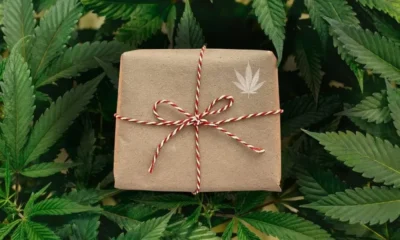

Can I Gift Marijuana This Holiday Season?
-


The Best Cocktails For An Easy Festive Thanksgiving
-


420 Vacations: Planning the Perfect Weed Vacation
Cannabis News
California Appeals Court Rejects Marijuana Grow Permit, Citing Federal Illegality
Published
18 minutes agoon
November 22, 2024By
admin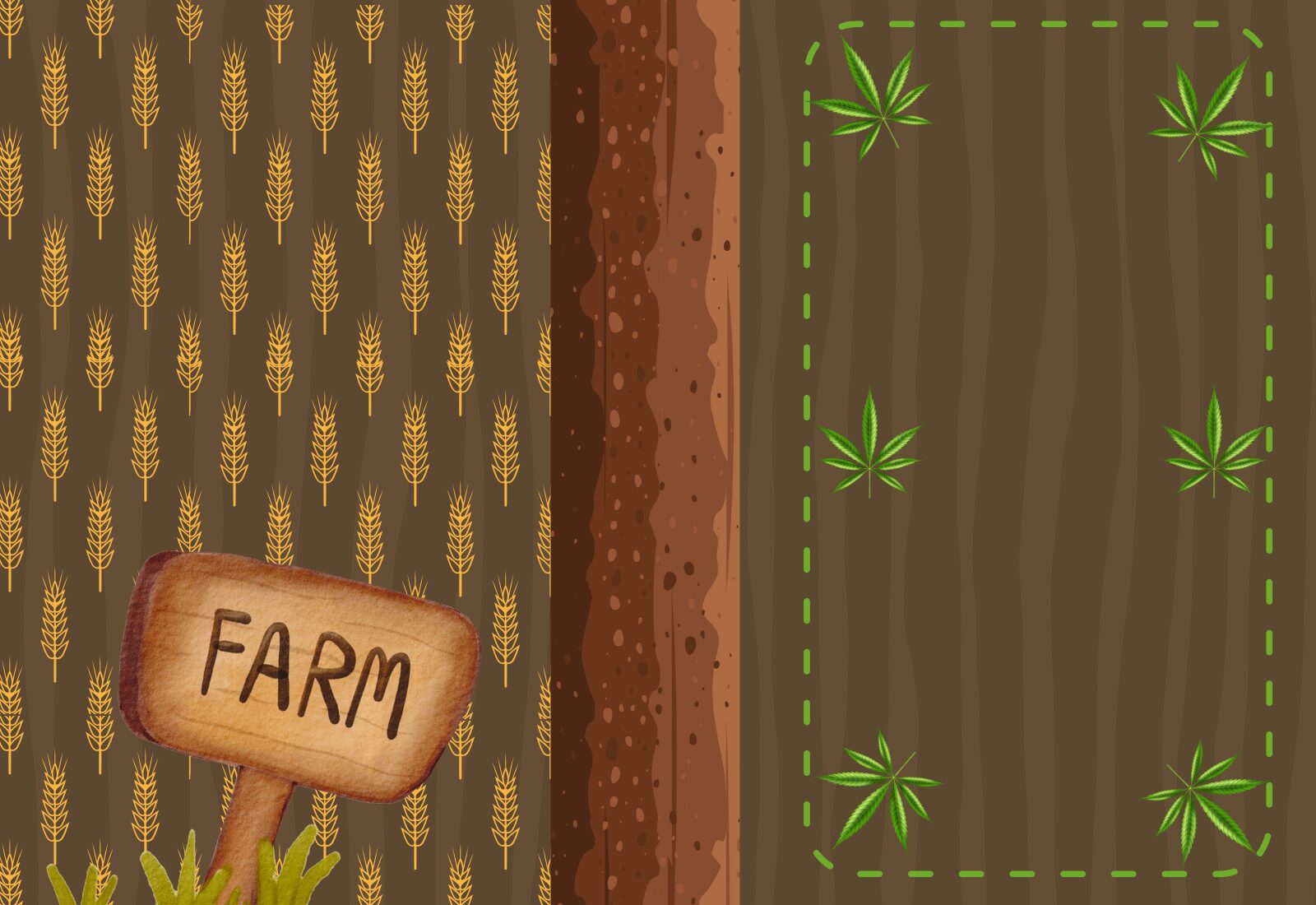
In a landmark decision that highlights the tension between state and federal cannabis laws, a California appellate court ruled on October 29th that property owners can refuse to allow the transportation of cannabis across their land via easements, even when the cannabis operation is approved by local authorities.
The Second District Court of Appeal’s unanimous decision draws attention to private property rights in a context where cannabis remains federally illegal, but state law allows licensed cultivation, distribution and sale. Presiding Justice Albert Gilbert stated, “No matter how much California voters and the Legislature might try, cannabis cultivation and transportation are illegal in California as long as it remains illegal under federal law.” JCCrandall LLC v. County of Santa Barbara, Case No. B333201, 2024 WL 4599304, Oct. 29, 2024.
Unless the California Supreme Court grants review – which I would not rule out – the decision empowers private property owners to refuse to contract with cannabis businesses, and restricts local government from approving cannabis operations that implicate the property rights of neighbors who object.
The case at hand
The dispute centered around a cannabis cultivation operation in Santa Barbara County, where JCCrandall LLC challenged a conditional use permit granted by the County to its neighbor, Santa Rita Holdings Inc. The critical issue was that Santa Rita Holdings could only access its 2.5-acre cannabis farm via an unpaved road crossing JCCrandall’s property through a pre-existing easement. JCCrandall grows oats and barley.
JCCrandall’s primary concern? It raised a number of complaints with the Santa Barbara County Supervisors about truck traffic and night operations, which did not gain traction, but in the Court of Appeal JCCrandall focused on what it claimed was potential liability associated with having federally illegal substances transported across its property, even though County regulators found that the Santa Rita operation was fully compliant with state and local laws.
Key legal findings
The appellate court’s decision hinged on several crucial points:
- Property Rights: The court emphasized that “the right to exclude others is the essence of the right of property ownership” and classified it as a fundamental vested right.
- Federal Supremacy: The panel determined that allowing cannabis transportation across private property “defies the Supremacy Clause” of the U.S. Constitution.
- State vs. Federal Law: While cannabis might be legal under California law, the court ruled that federal law’s prohibition takes precedence in this context.
California cannabis industry implications
Legal experts suggest this ruling could have far-reaching consequences for California’s cannabis industry. Section 1550.5(b) of the California Civil Code makes contracts within California involving cannabis lawful and enforceable, and Santa Rita Holdings bet the ranch on that argument. But the Court of Appeal held that the statute could not compel a landowner to allow cannabis to travel across its property on a pre-existing easement. Licensed operators may find it harder to do business because neighbors who have property rights affected by a cannabis business can object, and, under the JCCrandall ruling, local government must yield to those objections.
An example might be a cannabis dispensary that depends on access to its parking lot via an easement or is located in a shopping center where other lessees have rights to object to tenants notwithstanding the approval of the landlord. In cultivation, many cannabis farms depend on vehicular access through easements because they are remote and do not always have direct access to public thoroughfares, or they depend on water sourced from other properties pursuant to agreements made by prior owners who grew traditional crops. These neighbors might not need to show any negative impact on their property, but can argue that they could be found complicit in federally illegal activities.
I think the most problematic language in the JCCrandall ruling is the following, which might draw the attention of the California Supreme Court and cause it to grant review: “For as long as an easement is enjoyed, its mode and manner of use shall remain substantially the same as it was at the time the easement was created. The County argues the easement was used for agricultural purposes. But there is a vast difference between legal and illegal agricultural purposes.” (Emphasis added.) If California has determined that cannabis cultivation is legal – as it has – and state courts routinely enforce contracts involving cannabis, it is a pretty bold step to declare the use of a lawful pre-existing easement illegal simply because the agricultural crop is cannabis and take away easement access from Santa Rita.
Looking ahead
This decision creates new challenges for cannabis businesses in California, and will result in more disputes among neighbors. While the Biden administration has shown signs of easing federal marijuana restrictions, this ruling demonstrates that the federal-state law conflict continues to create significant legal hurdles for the cannabis industry.
California court decisions also can be persuasive authority in other states, so we might see similar litigation (and decisions) elsewhere in the country where cannabis has been legalized.
The case serves as a reminder that despite California’s progressive stance on cannabis, federal prohibition continues to cast a long shadow over the industry’s operations and development. As the cannabis landscape continues to evolve, this ruling may prompt businesses to reassess their property arrangements and local governments will certainly have to reconsider their permitting processes to give more careful consideration to objections by neighbors who claim that their property rights are implicated by cannabis operations.
Note: This post was first published earlier this month on the Alger ADR Blog.
Cannabis News
Autoimmune Conditions Are Rising Fast in American Medicine, Can Cannabis Help?
Published
1 day agoon
November 21, 2024By
admin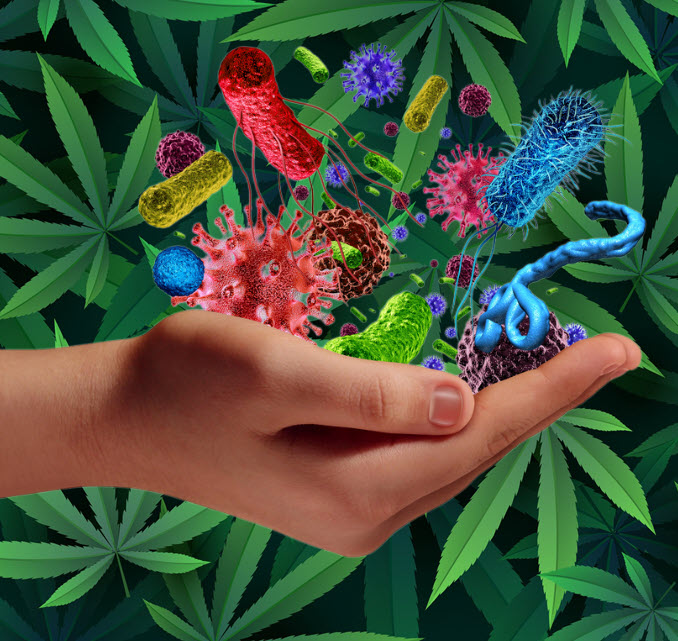
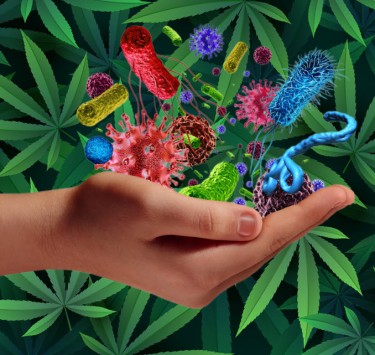
Why Are Autoimmune Conditions On The Rise? And How Cannabis Can Help
Autoimmune diseases refer to a group of medical conditions that occur as a result of the immune system attacking your own tissues.
In a normal human body, the immune system is responsible for protecting the body by producing antibodies that prevent toxins, cancer cells, and viruses from harming the body. However, when one is struck by an autoimmune disorder, the immune system is no longer able to distinguish the difference between dangerous cells and healthy cells. As a result, the healthy cells are attacked, too.
Today, we know of around 100 different kinds of autoimmune conditions. Some of the most common examples of autoimmune conditions include rheumatoid arthritis (RA), lupus, inflammatory bowel disease, celiac disease, Type 1 diabetes, multiple sclerosis (MS), and the Guillain-Barre syndrome (GBS) to name a few. Others include Graves’ disease, Hashimoto’s thyroiditis, psoriasis, and vasculitis.
According to the National Health Council, around 50 million Americans are affected by autoimmune diseases today. This is a conservative estimate, considering that several autoimmune conditions are tricky to treat and so many people go undiagnosed for long periods of time. It’s worrisome to note that there are more people developing autoimmune diseases these days, many of which have reached levels comparable to epidemics.
But cannabis can help!
How Cannabis Can Help Curb And Manage Autoimmune Diseases
Not one single cause is responsible for the alarming growth of autoimmune diseases, though there are several factors at play. While there isn’t just one cause we can point at, it’s certain the reasons lie in our environment. After all, human genetics haven’t changed significantly yet the chemicals, toxins, and pollutants in our food and everyday items have risen dramatically.
In addition, people are getting less sleep than ever; stress rates are through the roof, and people are constantly worried. There is a clear link between psychological stress and physical health as well as immunity, which is why it isn’t unusual – it’s even common – to see many autoimmune disease cases flare up after people experience severe stress caused by grief, an accident, job loss, or the death of a loved one. These highly stressful and traumatic conditions wreak havoc on the body’s immune response, causing inflammation all over the body.
Conventional treatments prescribed to treat autoimmune conditions are focused on taming inflammation; these usually include steroids but also some non-steroidal drugs. These drugs often come with unwanted side effects, but research has shown that cannabis can work with the endocannabinoid system through THC and CBD, as well as other cannabinoids, to simulate similar results. In one study for example, we can see the clear association of the endocannabinoid system for neurodegenerative and inflammatory processes seen in Multiple Sclerosis and Amyotrophic Lateral Sclerosis.
There has also been an increasing number of studies proving the efficacy of cannabis for treating several autoimmune conditions.
Cannabis For Multiple Sclerosis
Multiple sclerosis is one of the autoimmune conditions where a growing number of studies have come out supporting the therapeutic benefits of cannabis for. In a 2024 study, patients with multiple sclerosis reported several improvements in quality of life after using cannabis-based medical products (CBMPs). For the study, British investigators analyzed the impact of cannabis based medicinal products made from either oil or extracts in 141 patients who were enrolled in the UK Medical Cannabis Registry.
The researchers then analyzed the changes in patient outcomes after a month, then three and 6 months after. According to the patients themselves, they were able to sustain improvements in their mental and physical health after marijuana therapy.
“This case series demonstrates a potential association between the initiation of CBMPs and improved patient reported outcomes in sleep, anxiety, and general HRQoL [health-related quality of life] measures, over six months,” said the study authors. “Additional measures for HRQoL, including various physical and mental health subdomains, also exhibit improvements up to six months when compared to baseline,” the authors concluded.
In another study from 2023, patients with multiple sclerosis reported significant improvements in symptoms after cannabis use. For the study, researchers from the Dent Neurologic Institute in Buffalo, New York, analyzed the medical records of 141 patients with multiple sclerosis, who were also legally authorized to consume medical marijuana products. They then analyzed data from the patients after one up to 4 follow-up sessions after the initial session of cannabis therapy. Sixty-five percent of patients consumed 1:1 THC:CBD tinctures.
According to the authors: “The results of this study indicate that use of MC [medical cannabis] to alleviate symptoms of MS is largely efficacious, with improvement in pain (72 percent of patients), muscle spasticity (48 percent of patients), and sleep disturbance (40 percent of patients) frequently reported.”
“More than half of opioid users at baseline were able to either discontinue or decrease their opioid use after starting MC. The mean daily MME [morphine milligram equivalents] was significantly reduced from the initial visit (51 mg) to the last follow-up visit (40 mg). This is consistent with previous literature showing that MC legalization is associated with decreased opioid use and that MC use is associated with decreased opioid use in patients with chronic pain. These findings indicate that MC may represent an alternative analgesic to opioids for some patients,” they wrote.
Anecdotal Evidence
While more studies are needed to determine cannabis’ effect on other autoimmune conditions such as rheumatoid arthritis, we can rely on anecdotal evidence. In 2020, data from the medical journal, Rheumatology, revealed that patients who have this condition, along with those who have lupus and fibromyalgia, consume cannabis.
In fact, it was reported that marijuana was extremely common especially for patients with fibromyalgia. “In this meta-analysis, we found that one in six patients suffering from rheumatologic disease actively consumes cannabis, reducing pain reduction… A favorable effect of cannabis on pain in our meta-analysis reinforces the idea that cannabis could be used for analgesic purposes,” the authors concluded.
Conclusion
Cannabis is a safe and natural way to help prevent and treat the symptoms of autoimmune disease. It targets inflammation at its root, and is a proven natural way to help cope with stress, pain, insomnia, and inflammation all while protecting the brain. However, it’s important to ensure you medicate with clean, organic sources of marijuana.
AUTOIMMUNE AND CANNABIS, READ ON…

The U.S. Senate’s version of the Farm Bill finally landed this week. They’re calling it the Rural Prosperity and Food Security Act of 2024 (the “Senate bill”). The Senate bill follows on the House’s proposal, called the Farm, Food and National Security Act of 2024 (the “House bill”), offered in May. Neither the Senate bill nor the House bill would preempt state or Indian law regarding hemp or the regulation of hemp products. This means states and tribes will retain a lot of latitude in regulating hemp and hemp-derived products– which gets people fired up.
Aside from giving states some runway, the Senate bill and the House bill differ in key respects regarding hemp. Therefore, these august bodies must confer and reconcile their sundry proposals. That could happen in 2024, but seems more likely in 2025 when the new Congress convenes. As of this week, though, we finally have a framework.
The Senate Bill re-defines “hemp” and defines “industrial hemp”
Section 10016 of the Senate bill (“Hemp Production”) amends the definition of “hemp.” Hemp was defined in the 2018 Farm Bill and removed from the federal Controlled Substances Act (CSA), taking us on a truly wild ride. See: What Happened to Hemp? (“What Happened”). The Senate bill also gives us a definition for “industrial hemp.” Here are those definitions, with points of emphasis in bold:
(1) Hemp. The term “hemp” means (A) the plant Cannabis sativa L. and any part of that plant, including the seeds thereof and all derivatives, extracts, cannabinoids, isomers, acids, salts, and salts of isomers, whether growing or not, with a delta-9 total tetrahydrocannabinol concentration (including tetrahydrocannabinolic acid) of not more than 0.3 percent on a dry weight basis; and (B) industrial hemp.
(3) Industrial Hemp. The term “industrial hemp” means the plant Cannabis sativa L. if the harvested material (A) is only (i) the stalks of that plant, fiber produced from those stalks, or any other manufactured product, derivative, mixture, or preparation of those stalks (except cannabinoid resin extracted from those stalks); (ii) whole grain, oil, cake, nut, hull, or any other compound, manufactured product, derivative, mixture, or preparation of the seeds of that plant (except cannabinoid resin extracted from the seeds of that plant); or (iii) viable seeds of that plant produced solely for production or manufacture of any material described in clause (i) or (ii); and (B) will not be used in the manufacturing or synthesis of natural or synthetic cannabinoid products.
The new regime
Again, the definitional stuff in bold is what I want to emphasize.
First, the Senate bill keeps the THC threshold at 0.3 percent, which is an arbitrary number we’ve been advocating against for years. The Senate bill mirrors the House bill in this respect, though, so we are stuck with this, unless Ron Paul gets his way.
Second, the Senate bill keeps the 2018 Farm Bill’s total THC standard, including THCA. The House bill does this too. This was fairly predictable: in What Happened, I wrote that we could “expect the total THC standard to remain, which means that actual Delta-9 THC won’t be the only metric for calculating THC content.”
We’ve also explained on this blog that the 2018 Farm Bill and USDA rules mandate total THC testing on pre-harvest hemp batches, but do not mandate such testing on post-harvest hemp or hemp products. The Senate bill doesn’t change this paradigm, which means the “loophole” for gas station weed remains open. This proposal is a big win for opponents of the House bill’s “Miller Amendment,” which would narrow the definition of “hemp” to exclude intoxicating hemp-derived substances.
Third, the Senate bill introduces a new definition and framework for industrial hemp. The House bill does this too, albeit slightly differently. The idea here is to invite farmers to grow hemp for fiber and grain purposes, while freeing them from regulatory burdens with the Department of Agriculture and criminal exposure with the Department of Justice. More specifically, for “industrial hemp” growers, the Senate bill:
- removes background check requirements;
- instates “relaxed regulatory requirements” for sampling and inspection methodologies (which will need to be adopted by rule); and
- develops a certified seed program.
The Senate bill also makes any hemp producer ineligible to grow hemp for five years if that producer, “with a culpable mental state greater than negligence, produces a crop of hemp that is inconsistent with that license.”(Hint: use the seed program.) The proof standard here seems like it could be an issue, and even if anyone has been adjudicated as growing marijuana under the guise of hemp, Farm Bill ineligibility seems like a far-off concern.
Bottom line
The big takeaway for me is that the Senate bill leaves the door open for intoxicating hemp products, whereas the Miller Amendment to the House bill does not. Something’s gotta give. And it needs to happen soon, because we’re already long overdue. As I explained in a webinar last week, the Farm Bill deals with the nation’s entire food supply, not just hemp. Therefore, this is not like with the SAFE Banking Act, where we have a proposed law specific to cannabis that may or may not ever pass. The Farm Bill must pass, and soon.
Stay tuned and we’ll keep you updated on any major happenings. For more on this topic, check out our massive hemp and CBD archive, or these specific, recent posts:

California Appeals Court Rejects Marijuana Grow Permit, Citing Federal Illegality

Expert Lighting Tips For Successful Indoor Growing Weed

Acne And CBD: Exploring Alternative Dermatological Solutions

Can I Gift Marijuana This Holiday Season?

The Best Cocktails For An Easy Festive Thanksgiving

420 Vacations: Planning the Perfect Weed Vacation

Can Microdosing Help Manage Holiday Family Anxiety

11 Weed Shows and Movies on Netflix Worth Watching

Lawsuit Says DEA Acting In Bad Faith Over Marijuana

Autoimmune Conditions Are Rising Fast in American Medicine, Can Cannabis Help?

Distressed Cannabis Business Takeaways – Canna Law Blog™

United States: Alex Malyshev And Melinda Fellner Discuss The Intersection Of Tax And Cannabis In New Video Series – Part VI: Licensing (Video)

What you Need to Know

Drug Testing for Marijuana – The Joint Blog

NCIA Write About Their Equity Scholarship Program

It has been a wild news week – here’s how CBD and weed can help you relax

Cannabis, alcohol firm SNDL loses CA$372.4 million in 2022

A new April 20 cannabis contest includes a $40,000 purse

Your Go-To Source for Cannabis Logos and Designs

UArizona launches online cannabis compliance online course
Trending
-

 Cannabis News2 years ago
Cannabis News2 years agoDistressed Cannabis Business Takeaways – Canna Law Blog™
-

 One-Hit Wonders2 years ago
One-Hit Wonders2 years agoUnited States: Alex Malyshev And Melinda Fellner Discuss The Intersection Of Tax And Cannabis In New Video Series – Part VI: Licensing (Video)
-

 Cannabis 1012 years ago
Cannabis 1012 years agoWhat you Need to Know
-

 drug testing11 months ago
drug testing11 months agoDrug Testing for Marijuana – The Joint Blog
-

 Education2 years ago
Education2 years agoNCIA Write About Their Equity Scholarship Program
-

 Cannabis2 years ago
Cannabis2 years agoIt has been a wild news week – here’s how CBD and weed can help you relax
-

 Marijuana Business Daily2 years ago
Marijuana Business Daily2 years agoCannabis, alcohol firm SNDL loses CA$372.4 million in 2022
-

 California2 years ago
California2 years agoA new April 20 cannabis contest includes a $40,000 purse



